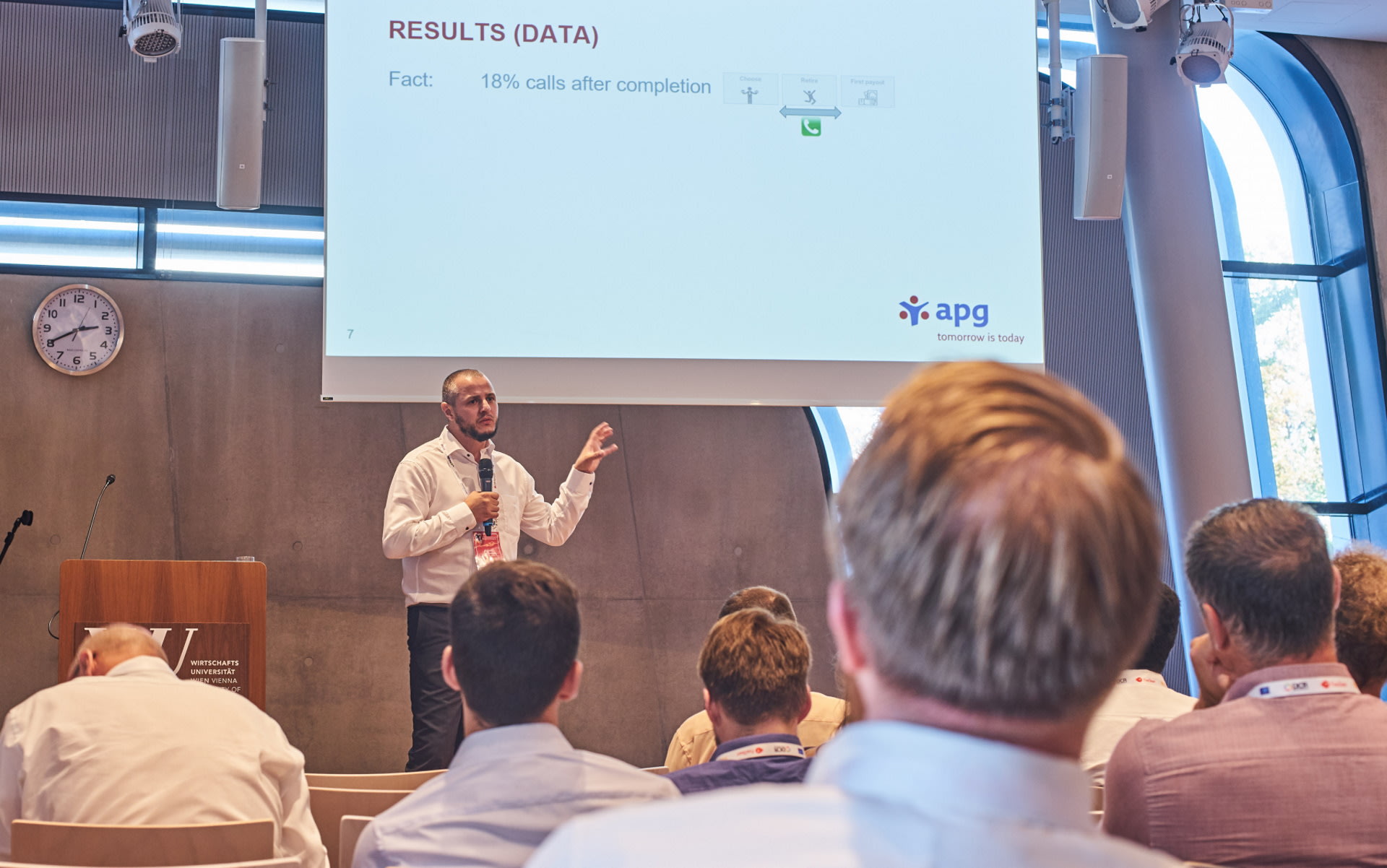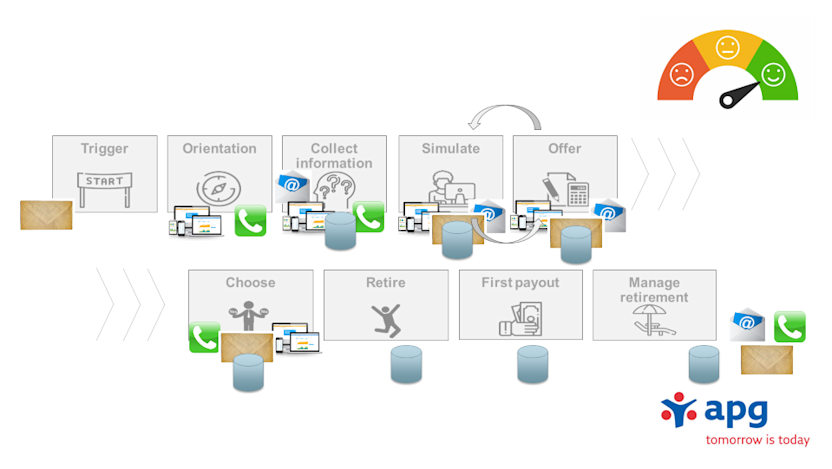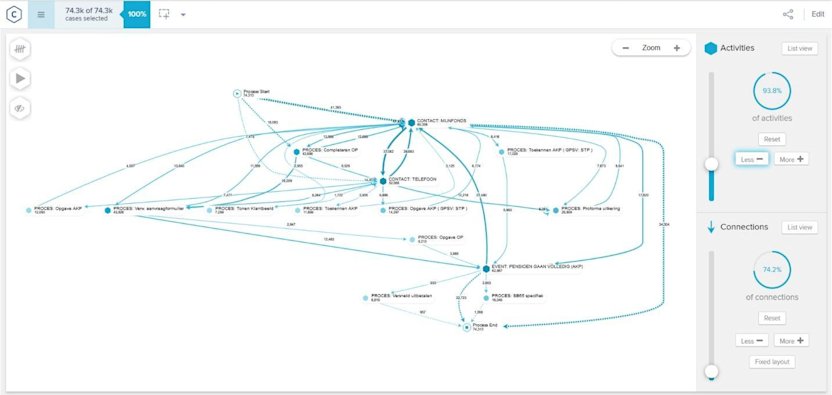
APG Wins the Business Process Innovation Award 2019 by “Doing What Was Needed”
Before the Business Process Management 2019 conference in Vienna, Jerome Geyer-Klingeberg of the Celonis Academic Alliance asked us whether our team at Algemene Pensioen Groep (APG) would be interested in submitting a paper that detailed how we optimized our business processes.
We immediately thought that one of our first analysis projects with Celonis would make for a perfect submission. However, none of us could have guessed that it would ultimately lead to winning the “Business Process Innovation Award for 2019” for APG.
Here is a brief breakdown of the process optimization project that led to our winning submission, and APG’s success in delivering greater customer experiences, and realizing significant business value.
Improving APG’s Customer Journey with Self-Service Data
In this project, we analyzed APG’s customer journey data to find correlations between customer happiness and characteristics of the processes (contacts, website visits, email and physical letters sent, etc). Analyzing this data helped us take more effective actions in our efforts to improve APG’s customer journey, such as sending an informational letter 3 months earlier than before, which ultimately results in less customer phone calls.
Another valuable insight told us that although it was easy for our teams to identify where customer journeys ended, it was rather difficult for our clients, which often led to more phone calls. We learned in a trial that simply sending a postcard was not a distractor but became an attractor. These concrete results were achieved by implementing two key aspects to our approach: optimizing self service for our customers, and utilizing our data hub.
The ‘Actionable Insights’ teams within APG applied the concept of implementing self-service as much as possible. In practice, this means that we no longer have to send PDF reports with our findings to our colleagues, but instead build interactive dashboards. In an ideal scenario, the data organized within these dashboards is refreshed automatically. Furthermore, our colleagues are trained internally to use the dashboards independently.
This enables them to find the answers to most of their questions on their own—even the questions they didn’t know to ask us at the beginning of a project.
Putting APG’s Data Hub in the Spotlight
We also applied an early version of our data hub concept. A data hub is similar to a “data lake”, in that it is used as a central place for storing data. However, in contrast to a data lake, a data hub is used to store only data that is defined, checked, and modelled as one canonical data model.
Our colleagues within APG’s Data Intelligence department work on building, extending, and maintaining our enterprise-wide data hub. The process of adding data to the hub involves modelling the data in one canonical data model, engineering the data flow from the source systems to the data hub according to this data model, testing the engineered flow, and finally, making the data quality clear.
This means that the data in the data hub combines data from different systems within one data model, and includes insights into issues that impact data quality (Of course, we try to fix all data quality issues, but we have a constant backlog that provides insights into the known issues first. Thus, this feature is necessary to preventing standstills.)
Between the three of us, writing up APG’s submission for the Business Process Innovation Award was simple. Our internal clients were happy that their project was presented in the paper, and gave us the ‘OK’ to publish. Then we just needed to wait for approval from the scientific community to publish our work—this was the tricky bit. We never aimed at being “innovative,” we just did what needed to be done for the benefit of our company, and our clients So, imagine our surprise when we were nominated to receive the award~!
Our Trip to Vienna
We began to prepare for our trip to Vienna and gave ourselves personal days in order to explore Vienna after the conference was over. Our team prepared questions and topics we wanted to learn more about during the conference—our main curiosity being the application of Process Mining, and how it combines with data science. Lastly, we created a 10-minute presentation that focused on sharing the concrete results of our process changes..
The conference itself was something new, and a relief compared to the more “commercial” events our team was used to attending. Many parallel tracks, open and honest researchers presenting their work, and a ton of like-minded people to talk to and exchange ideas with made this conference extremely valuable to our team. Of course, we also enjoyed the hospitality we received, and enjoyed a fun social event every night. And—it goes without saying—for us Dutch, the food was terrific!
Our presentation was received very well by the audience. Our rehearsals and preparations paid off when Rachied was able to present our story within the time limit without rushing and address all the key messages we wanted to convey. Afterwards, we had many interesting talks, and exchanged different ideas and approaches with the other attendees.
After enjoying the rest of the conference, there was an award ceremony for papers and presentations in different categories. Imagine our surprise when our names appeared on a screen indicating that we won one of the innovation awards in the industry track! It was like icing on an already-delicious cake.
We are happy to report that our excitement and energy made it all the way back on our return trip to APG. Since the project described in our paper, we have completed several more projects that focus on applying self service and the data hub concept to our processes. The paper, conference visit—and of course the award—only strengthens and encourages the idea that our approach to process excellence is working.
What We Thought Our Customers Experienced:

What Our Customers Actually Go Through:

This is what we discovered to be the actual process of APG's actual customer journey, indicating a more complicated process than expected.






